US President Joe Biden invoked the need to focus on Washington’s No. 1 foreign-policy priority, China couple of months ago by announcing the withdrawal of American forces from Afghanistan.
Ending the war would, the president argued, permit America to redirect its energies toward new, more pressing challenges, foremost among them “extreme” competition with Beijing.
It is believed that China as a rising superpower threatens to eclipse the United States technologically, militarily, and economically.
Many believe that US withdrawal from Afghanistan may result in more insecurity and instability in the country that can affect China's ambitious One Road One Belt project to determine the world trade order.
To know more about the issue we reached out to Larry Cata Backer, Professor of Law and International Affairs at Penn State University.
Here is Mehr News agency's interview with him:
China has achieved great economic development without following the model that liberalism offers. As a major rival for the West liberal democracy model, it seems that the US is trying to drag China into some geopolitical tensions like in Taiwan, Afghanistan and the West Asia in order to hamper Beijing’s ambitions. What do you think of this?
This is a question without a clear-cut answer. The ambiguity--an ambiguity that tends to produce exasperation among those actors seeking clarity--is produced by the increasingly incompatible ways in which the vanguards in the United States and in China see the world. Those differences, then, and their advantages to the political and economic projects of both rising systems, are then tested at the borderlands of them and within first, second, and third order dependencies of the new post-global and post territorial imperial models.
Put simply, both the United States and China have now become heavily invested in the construction of hub and spoke systems for the management of economic production that serves the center but provides benefits as well to along its spokes. The framework of this model blends echoes of ancient tributary systems along with the homogenizing mechanisms of technology-fueled consumption. In the “new era,” sides move toward the reconstitution of empire in new forms.
Under contemporary conditions, it is fundamentally important for the amalgamation of ideology, power and production that are constituted as China and the United States to hamper each other’s ambitions. That hampering is undertaken to evidence the superiority of the ideological system of the victory in these battles.
That, at last, is what one is confronted with when one considers the tensions that explode on the borderlands of the emerging empires like what is going on about Taiwan and Hong Kong. Afghanistan provides a case in point. On the one hand one can view it as an American defeat and a great victory for China--if that victory is understood as empowering the Chinese economic apparatus to complete its focus on encircling India (an affiliated regional power aligned with the United States or perhaps better said against China) and building its Belt and Road Initiative infrastructure grid to connect China to the ports of Pakistan. In this reading, the American abandonment of Afghanistan also significantly detaches the United States from Pakistan, and creates in both a second and third order dependency relationship with China. But at the same time, this shifting of borders might advantage the United States as well in the sense of strengthening its own product chains now through India and Southeast Asia and resetting the relationships in ways to restore the United States to a position of control but control actualized through others.
The Middle East presents a more complicated scenario for both China and the United States. Here the risks for both are greater because the regional powers can act with a greater measure of autonomy--enough autonomy to sometimes force the hand of the superior (but far away) power centers. In this context the ambitions of both Beijing and Washington will likely be hampered by the criss-crossing and constantly rebalanced calculations of the major players in the region.
The recent G7 summit allocated billions of dollars to challenge China’s One Road One Belt project. Will western countries be able to contain China?
This is an excellent question especially as it highlights another key development since 2013--the convergence of the operating style of the two key power players on the world stage today. The “containment” game actually started in its modern form after the great financial crisis of 2007. At the time, though, the idea wasn’t containment. What became containment strategies were initially constructed in the service of the post 1945 vision of reducing difference and forging convergence through compromise, but all with fidelity to the great core values of the post 1945 system--separation of pubic (regulatory) and private (commercial and markets driven) activities; a level playing field for market participants; markets driving economic activity; and an ILO approach to labor-capital issues, among the more important. It was convergence that drove the Obama administration to ramp up US participation in the Trans Pacific Partnership (TPP), and to engage in a series of secret but not really very secret meetings the purpose of which was to draw China into the arrangement. The carrot was greater access to a huge market and a deeper embedding with global trajectories; the stick was exclusion from this zone and the likelihood that the normative principles that drove it would not include principles and compromises important to China (especially with respect to Chinese approaches to economic planning, the role of the state in private activity. China chose difference over unity (or from their perspective, the US chose to use TPP as a back door to challenging core Marxist-Leninist principles of state-economic relationships that could not be given up without compromising the legitimacy of that system). So what started out as a means of bringing powers closer together actually and eventually contributed to the sharpening of difference.
It was in part to meet the threat that exclusion from TPP posed that the Chinese central authorities developed the Belt & Road Initiative in the way they did. Exclusion produced the rhetoric of containment--rhetoric that was historically appealing and had substantial “selling power” among the potential market for Chinese economic ambitions among developing states with their own tangled histories with the West. Of course, there is much there that constitutes merely the globalization of the great Chinese project of Reform and Opening Up. I use the word “merely” not to dimmish the great leap that loved internal working styles developing China outward. The genius of the concept permitted the Chinese central authorities to align internal development of Marxism-Leninism centered on Chinese development with its expression as a means of aligning Chinese with foreign development under the guidance and leadership of the Chinese vanguard. Again here BRI replicated the core-collective organizational foundation of emerging Chinese Leninism with both an implementation strategy that put China at the center and that permitted that center to align internal and external development in a seamless way. It was thus appealing to developing states as a political, economic, and societal model even as it served to project outward Chinese economic objectives in ways that aligned with their political-economic model and could in that form challenge what was viewed as the counterthrust represented by TPP and to create a barrier to the projection of Liberal democratic principles into China. At the same time it also provided an extraordinary opportunity to mimic liberal democratic markets driven internationalism with a new and potentially more appealing to developing states communist internationalism The temptations, given the threats (and the sense among Chinese elites that China would eventually eclipse the US in terms of economic power (and perhaps mora authority) were irresistible. And the opportunities to merely internationalize Chinese internal practices outbound made the project that much easier.
And here, irony. China’s BRI changed the rules of the game precisely because China viewed TPP as a threat to the development of its own autonomous path to prosperity and stability. It represents the first real effective effort to contain liberal democratic globalist internationalism and the great post 1945 project of alignment under the unity or harmony in diversity mandate through which all difference would be minimized within the great organizational principles of markets driven internationalism founded on the normative construct of UN internationalism. Thus, from a longer term perspective the Chinese BRI represents the first of the post-global’s strategies of (1) containment; and (2) supplanting. The supplanting element was made clear early on as well-- China offered its BRI approach as a direct global internationalist alternative to that in place since 1945 and driven by the great liberal democratic powers. Further, in this light, one can measure the success of this effort in two ways. The first measure is as a function of the collapse of the supremacy of the principle of alignment and convergence at the ideological heart of the post 1945 system, one that was framed and legitimated by the triumph of the liberal democratic camp against the last of the old fashioned empires--that of the Soviet Union and antique Marxist-Leninism in the late 1980s. The second measure is as a function of the reaction of the liberal democratic states to the sudden and quite aggressive rise of the BRI system--a rise powerful enough (like the Mongol invasions of the 13th century) to reach into the heart of Europe itself.
Using that approach as a conceptual lens, the question then becomes not whether the liberal democratic camp can contain China, but whether the West’s efforts to mimic what is the Chinese post-global vision for a system of competing imperial orders each managing its complex webs of dependencies and fighting along the edges of their borders in the form of the G7 declaration of a liberal Democratic version of the BRI, can effectively avoid the containment of the liberal democratic camp by China. The reactionary element of the liberal democratic project is contained even in its name--the “Building Back Better” (B3W) project, but in effect, the project aims to abandon the fundamental ordering principles of the great post 1945 globalist internationalist project.
And, of course, the still greater irony, what the liberal democratic order is effectively copying is a version of China’s copying of the TPP--which had been abandoned by the United States in 2017. For this the United States has only itself to blame--from the phlegmatic response of the late Obama administration (miscalculating because of its presumption of a victory by Mrs. Clinton who would have been tasked with dealing with TPP and the misguided opposition to its vision by the left and right edges of the influence driving elites); the visceral opposition by Mr. Trump who saw in this a low cost gesture which he could use to feed his followers; and the absolute blindness of the American political class and their intellectual servants who were so caught up in themselves and their own vision of thing that they failed almost entirely t appreciate what was going on outside of their self-absorbed and limited frames of reference. Now of course the nation pays the price. Yet in that is also a lesson for the Chinese central authorities as well as the leading groups of global regional powers.
And that leads to, and makes possible, very short answers to the question posed: (1) Neither China nor the United States will be able to contain the other (2) the object of all this maneuvering is centered on the extension and control of production chains to advance the interests of the central authority (Washing and Beijing--and to a lesser extent the EU, though even China understands the EU’s odd but not quite primary position in the new imperial ordering of global production and with it of global affairs); (3) it was inevitable that the liberal democratic camp, under the guidance and leadership of the United States, would have to conform itself to the new realities, effectively abandon a core policy grounded in the convergence of difference to one in which the heart of strategic competition requires the sharpening of differences at the border of ideological and production empires; (4) the billions that will be spent must be spent, starting with an infrastructure improvement project in the American metropolis (again an irony the Biden Administration actually seeing implemented the infrastructure plan first floated by the Trump Administration and rejected by Democrats before 2020); (5) infrastructure will have strategic implications well beyond reducing the costs of trade and production by providing a physical manifestation of production chain connection, by creating distinct techno-corridors that will be difficult to abandon making moving from BRI to its American version harder, by ensuring the robust protection of resource and production corridors, and by ensuring an alignment between the projection of military and economic power. The left wing of the United States used to mock its government for that alignment when it was reduced to support for certain states in the Middle East; they whistle a different tune when it is to the provision of their creature comforts and the expansion of their investment portfolios that this projection protects; and (6) development of robust B3Wprinciples and practices (TPP 2.0, will provide a necessary apparatus through which trade between empires can be properly managed--the resulting regime from this policy of mutual containment, then posits free trade within the imperial production corridors, and strictly managed trade between the two blocs. .
How do you assess the recent developments in Afghanistan that may also spill over to Central Asia in hindering China’s economic development?
China will play a critical role in the development of the situation in Afghanistan in particular and in central Asia in general. But here there are complications--Russia and Iran also have strategic and ancient spheres of influence and prerogatives in the region--especially where the modern names of the regions are stripped away to reveal the ethno-territories that have been parts of both ancient empires off and on for many centuries. Moreover, the instability in that country will produce ethno-migrations to bordering states that itself may add to instability.
China will likely work through Pakistan rather than directly in Afghanistan. And it is just as well. The Afghanistan government is waiting, the merging Taliban with the apparatus of state has very little love for China and Chinese policy. All of this is speculation of course, yet Afghanistan has never disappointed in its strong adherence to traditions of dealing with foreigners.
The most interesting potential consequences will revolve around the use by the new government of Chinese infrastructure as a hostage form which to exact payment (reverse tribute for good behavior); the willingness of the Afghanistan government to allow itself to be used as a proxy in penetrating the Xinjiang region for the purpose of subverting the policies of the central authorities. Production of opium and related goods can be used for the purpose of destabilization. More exquisite and provocative would be the possible willingness to support penetration of these markets into China.
That is a great lesson for the US again. And in any case Iraq became a disastrous distraction early in the engagement with Afghanistan. China, in its own way, will face the same dilemma. But unlike the United States, which has very little to lose by cutting ties, China now has a great deal to lose especially in the construction and maintenance of the physical manifestation of its hub and spoke model of economic management of its global production and consumption chains. From the American perspective, the result is a cost effective means of hobbling BRI and indirectly punishing both Afghanistan and Pakistan for their less than enthusiastic loyalty. In that case, the cultivation of instability and the directed sharpening of difference can undermine the stability essential to the smooth operation of this part of the Chinese silk road. To the extent that China responds militarily, it will assume the same risks and incur the costs already well documented in earlier similar scenarios.
Do the US and its allies enjoy enough tools and potentials to contain Beijing? Will China finally succeed in determining the world trade order?
Much of what has been said before can be applied to answer this question. The simplest answer is direct: (1) The liberal democratic order under the leadership of the United States still has more than enough tools to prevent China from substituting its own world trade order for that of the liberal democratic camp; (2) but in the effort to prevent such a reversal of global authority, two things occur that perversely enough help reshape the world trade order itself, the first is that the principle objective is to sharpen difference rather than promote convergence across difference, and the second is that in the absence of a singular vision for a world trading order, global trade will be unified only by and as a series of rules under which trade may pass from one universal (and closed ) system to another. That is the future the contours of which we are already seeing. The evidence is plain: First the efforts to ensure that data and information are confined within the borders of the state from which it is sourced. Second, the increasing use of waivers from free trade on grounds of nationals security and national interest Third, the heightened wariness of espionage. Fourth is the development of institutional countermeasures to the use of economic power and markets and a site for non-violent warfare between competing camps.
Interview by Payman Yazdani



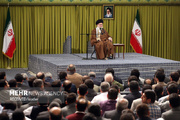


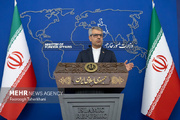
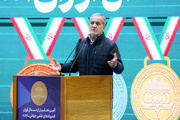

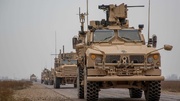










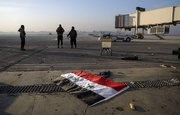

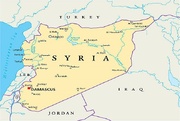
Your Comment